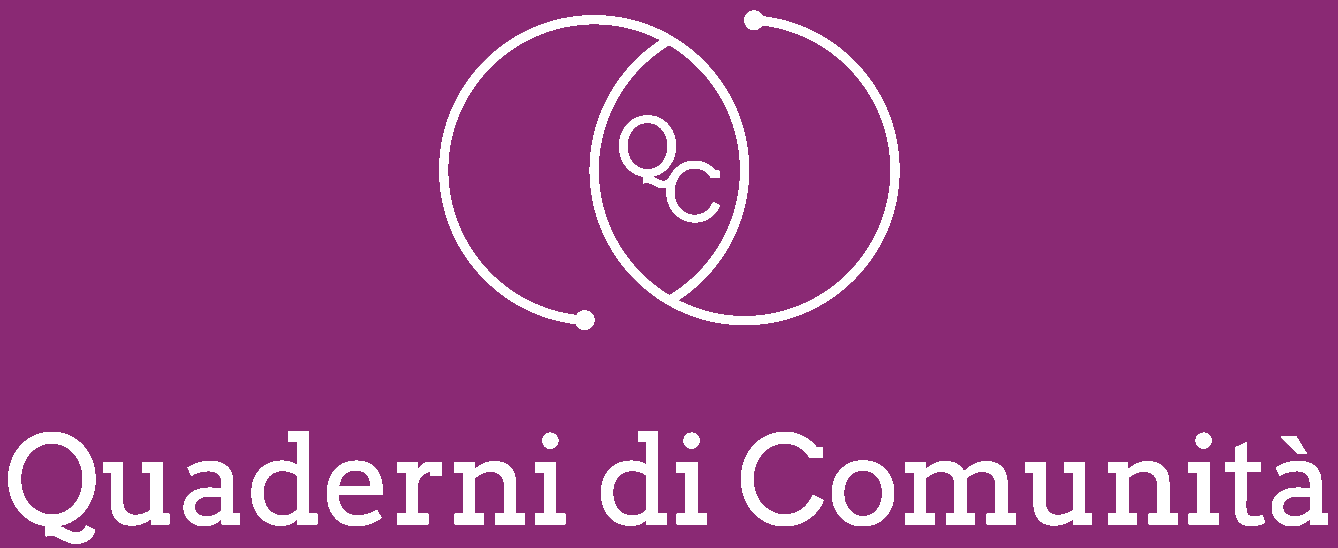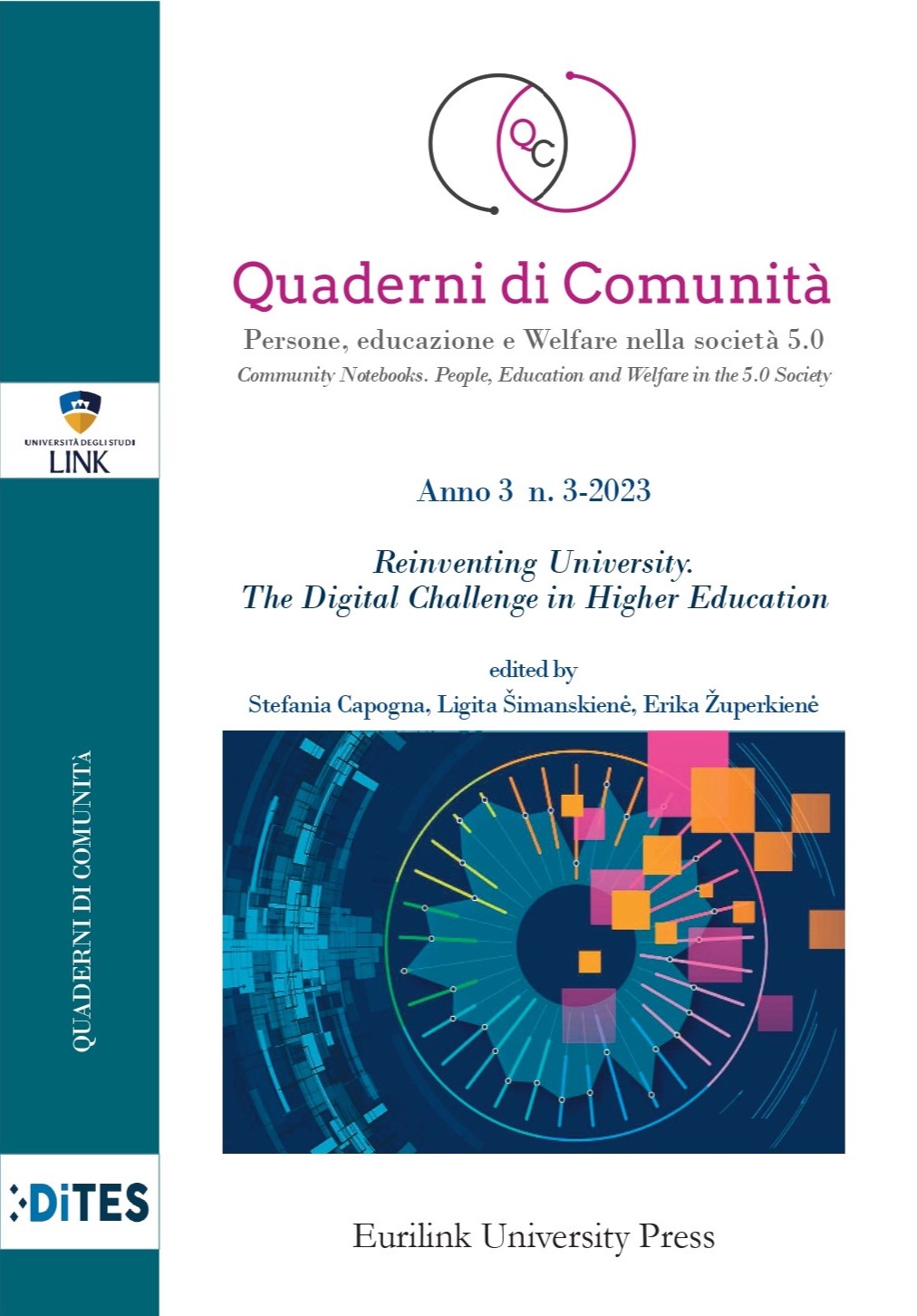Self-assessment in vet and higher education: links and further developments
DOI:
https://doi.org/10.61007/QdC.2023.3.157Keywords:
Quality assurance, higher education, vocational education and training, self-assessment, peer reviewAbstract
Despite the already existing self-assessment methodologies and tools in place, Education systems need to further invest in quality assurance measures that can guarantee a quality culture. Quality Assurance Frameworks and, more specifically, quality criteria and indicators are increasingly important for all Education providers, and Education authorities as well. The overlapping and redundancy of self- assessment tools and methods in different education and training settings created the condition for an integrated approach that can provide synergies among different systems and a solid base for further implementations and improvements. The paper reports a critical review of quality assurance measures and instruments already existing and used by both the Vocational Education and Training and the Higher Education systems in Europe. Moreover, the research results of a national experimentation will be illustrated to show how the European Peer Review methodology can be considered an agile method for different learning settings since it adapts swiftly to diverse training and education needs and provides quality learning opportunities for those who use it. Finally, the paper places a strong focus on the increased flexibility of the European Quality Assurance for Vocational Education and Training (so-called EQAVET) Framework and other EU quality assurance tools, reinforcing the idea to further explore opportunities for their adaptation to enhance quality and guarantee a continuing improvement of measures in line also with the digital readiness required by the technological revolution and the digital transition that affect the different systems – from School to Higher Education.
References
Agasisti, T., Falzetti, P., Freddano, M. (2015), L’uso dei risultati delle Rilevazioni Nazionali per l’autovalutazione delle scuole. RIV - Rassegna Italiana di Valutazione, 61, pp. 28-48.
Allulli, G. (2011), Modello teorico integrato di valutazione delle strutture scolastiche e formative. I libri del Fondo sociale europeo, Roma, Isfol.
Allulli, G. (2009), La Qualità al centro delle politiche europee. Rassegna CNOS. Problemi esperienze prospettive per l’istruzione e la formazione professionale, 25 (2), Roma, CNOS-FAP, pp. 51-58.
Allulli, G., Gentilini, D. (2011), Studio comparato sui modelli di garanzia di qualità dell’istruzione e formazione professionale in alcuni paesi europei. Roma, Isfol – Analisi.
Capogna, S. (2019), La valutazione come strumento di empowerment organizzativo e professionale. RIV Rassegna Italiana di Valutazione, pp. 98-117.
CEDEFOP, (2022), Teachers and trainers in a changing world: building up competences for inclusive, green and digitalized Vocational Education and Training (VET). Synthesis Report. Luxembourg: Publications Office of the European Union.
CEDEFOP, (2011), Assuring quality in vocational education and training: the role of accrediting VET providers. Luxembourg, Publications Office of the European Union.
Cirlan, E. (2022), Are the European standards for quality assurance relevant for institutions outside the European Higher Education Area? Observations from the evaluations carried out by the Institutional Evaluation Programme. Brussels, European University Association.
CONFAP, FORMA (2017), Report tecnico-descrittivo della sperimen- tazione VALEFP –Autovalutazione per l’Istruzione e la Formazione Professionale. Roma.
Council of the European Union, (2020a), Council Recommendation of 24 November 2020 on vocational education and training (VET) for sustainable competitiveness, social fairness and resilience. Brussels, Official Journal of the European Union.
Council of the European Union, (2020b), Osnabruck declaration on vocational education and training as an enabler of recovery and just transitions to digital and green economies. Thessaloniki, CEDEFOP.
Dordit, L. (2018), Una proposta di valutazione della IeFP alla luce delle policy europee e del Sistema Nazionale di Valutazione. Per una valutazione delle scuole oltre l’adempimento. Riflessioni e pratiche sui processi valutativi, Milano, Franco Angeli, pp. 153-167.
ENQA, (2008), Quality Procedures in the European Higher Education Area and Beyond — Second ENQA Survey. Enqa, Helsinki.
ETF, (2015), Promoting quality assurance in vocational education and training. The ETF approach. Torino, ETF.
European Association for Quality Assurance in Higher Education et al., (2015), Standards and Guidelines for Quality Assurance in the European Higher Education Area (ESG). Brussels.
European Association for Quality Assurance in Higher Education et al., (2005), Standards and Guidelines for Quality Assurance in the European Higher Education Area (ESG). Helsinki.
European Commission, (2023), The EQAVET Network’s approach to VET system level Peer Reviews: A Manual. Luxembourg, Publications Office of the European Union.
European Commission, (2019), Study on EU VET instruments (EQAVET and ECVET). Luxembourg, Publications Office of the European Union.
European Parliament, Council of the European Union, (2009), Recommendation of the European Parliament and of the Council of
June 2009 on the establishment of a European Quality Assurance Reference Framework for Vocational Education and Training. Brussels, Official Journal of the European Union.
Evangelista, L. (2016), L’accreditamento delle strutture per la formazione professionale: evoluzione e confronto tra i dispositivi previsti da Regioni e Province Autonome e il modello nazionale. I libri del Fondo sociale europeo, Roma, Isfol.
Evangelista, L., Carlini, D. (2020), EQAVET e la qualità della IEFP in Italia. INAPP Report, Roma, Inapp.
Evangelista, L., Fonzo, C. (2023), La metodologia europea della Peer Review: prima sperimentazione tra istituti scolastici e Centri di Formazione Professionale. Rassegna CNOS. Problemi, esperienze, prospettive per l’istruzione e la formazione professionale, 39 (1), Roma, CNOS-FAP, pp. 117-127.
Fonzo, C. (2022), Università: uno sguardo verso il futuro. Quaderni di comunità: persone, educazione e welfare nella società 5.0, Roma, Eurilink, pp. 35-40.
Freddano, M., Pastore, S. (2020a), Il Sistema nazionale di valutazione e l’uso dei risultati delle Rilevazioni nazionali INVALSI nelle scuole: quali cambiamenti? Il dato e il miglioramento scolastico. II Seminario “I dati INVALSI: uno strumento per la ricerca”, Franco Angeli, Milano, pp. 9-32.
Freddano, M., Pastore, S. (2020b), Per una valutazione delle scuole oltre l’adempimento. Riflessioni e pratiche sui processi valutativi. Franco Angeli, Milano.
Freddano, M., Stringher, C. (2021), Fare autovalutazione nella scuola dell’infanzia. Rapporto sulla sperimentazione del RAV Infanzia, Franco Angeli, Milano.
Gomez Paloma, F., Poliandri, D., Giampietro, L. (2020), The Value for Schools Project: Pedagogical research and Learning Analytics for the self-evaluation of schools. European Journal of Research on Education and Teaching 18 (1 Tome I), Lecce, Pensa Multimedia, pp. 294–307.
Gutknecht-Gmeiner, M. (2008), Externe Evaluierung durch Peer Review: Qualitätssicherung und -entwicklung in der beruflichen Erstausbildung. VS Verlag für Sozialwissenschaften.
Harris, A. (2001), Building the capacity for school improvement. School Leadership and Management, 21 (3), pp. 261-270.
Hopkins, D. (2001), School Improvement for Real. London: Routledge-Falmer.
INAPP, (2023), XX Rapporto di monitoraggio del Sistema di Istruzione e Formazione Professionale e dei Percorsi in Duale nella IeFP. Report tecnico. Roma, Inapp.
INAPP, (2022), XIX Rapporto di monitoraggio del sistema di Istruzione e Formazione Professionale e dei percorsi in duale nella IeFP a.f. 2019-2020, Report tecnico. Roma, Inapp.
INAPP, (2021), XVIII Rapporto di monitoraggio del sistema di Istruzione e Formazione Professionale e dei percorsi in Duale nella IeFP a.f. 2018-19. Report tecnico. Roma, Inapp.
INDIRE, (2018), Linee Guida al Piano di Miglioramento. Firenze, Indire.
INVALSI, (2022), Rapporto sulla Sperimentazione del RAV per l’Istruzione e Formazione Professionale, Roma, Invalsi.
INVALSI, (2021), Rapporto prove Invalsi 2021. Rapporto nazionale. Roma, Invalsi.
INVALSI, (2020), Rapporto sulla sperimentazione del RAV per la Scuola dell’infanzia. Roma, Invalsi.
INVALSI, (2019a), Le prove computer based per la rilevazione nazionale degli apprendimenti INVALSI 2018: aspetti metodologici. Roma, Invalsi.
INVALSI, (2019b), OCSE PISA 2018. I risultati degli studenti italiani in lettura, matematica e scienze. Roma, Invalsi.
INVALSI, (2016a), La valutazione delle scuole in Italia: a cosa serve, come è realizzata. Istruttoria per la Conferenza del Sistema Nazionale di Valutazione. Roma, Invalsi.
INVALSI, (2016b), Programma e protocollo per le visite di valutazione esterna nel Sistema Nazionale di Valutazione. Roma, Invalsi.
Kelly, B. (2010), Towards a quality assured and integrated lifelong learning implementation strategy in Belgian EU Presidency Conference “Quality Assurance and transparency as interface between Vocational Education and Training, Schools and Higher Education to enhance mobility and to support easier pathways to Lifelong Learning”. Brugge.
Manatos, M. J., Huisman, J. (2020), The use of the European Standards and Guidelines by national accreditation agencies and local review panels. Quality in Higher Education, 26:1, pp. 48-65.
MIUR, (2019), Il Rapporto di Autovalutazione - Nota metodologica e guida operativa. Roma, Miur.
MIUR, INVALSI (2017a), Mappa indicatori per Rapporto di Autovalutazione. Roma, Invalsi.
MIUR, INVALSI (2017b), Rapporto di Autovalutazione. Guida all’autovalutazione. Roma, Invalsi.
OECD, (2013), Synergies for better learning: An international perspective on evaluation and assessment. OECD.
Poliandri, D., Epifani, G. (2020), Scoprire i Centri Provinciali per l’Istruzione degli Adulti: contesti, ambienti, processi. Dati dal Questionario CPIA Valu.E e dal Rapporto di autovalutazione. Roma, Invalsi.
Poliandri, D., Epifani, G., Sette, S. (2016), Le Rubriche del RAV. Prime analisi, validità e affidabilità, uso da parte delle scuole delle Rubriche del Rapporto di Autovalutazione. Roma, Invalsi.
Poliandri, D., Freddano, M., Molinari., B. (2019), RAV e dintorni: verso il consolidamento del sistema nazionale di valutazione. Sintesi dei risultati dell’Azione 1 – Valutare la Valutazione. Progetto PON Valu.E, Roma, Invalsi.
Smidt, H. (2015), European Quality Assurance - A European Higher Education Area Success Story. The European Higher Education Area, London, Springer.
Tramontano, I., Allulli, G. (2012), Manuale di peer review per l’istruzione e la formazione professionale iniziale. I libri del Fondo sociale europeo, Roma, Isfol.
UNESCO, (2017), Towards Quality Assurance of Technical and Vocational Education and Training, Unesco, Bangkok Office.
Visscher, A. J. (2009), Improving quality assurance in European vocational education and training: factors influencing the use of quality assurance findings. London, Springer.
Downloads
Published
How to Cite
Issue
Section
License
Copyright (c) 2023 Quaderni di comunità. Persone, Educazione e Welfare nella società 5.0

This work is licensed under a Creative Commons Attribution-NonCommercial-NoDerivatives 4.0 International License.







